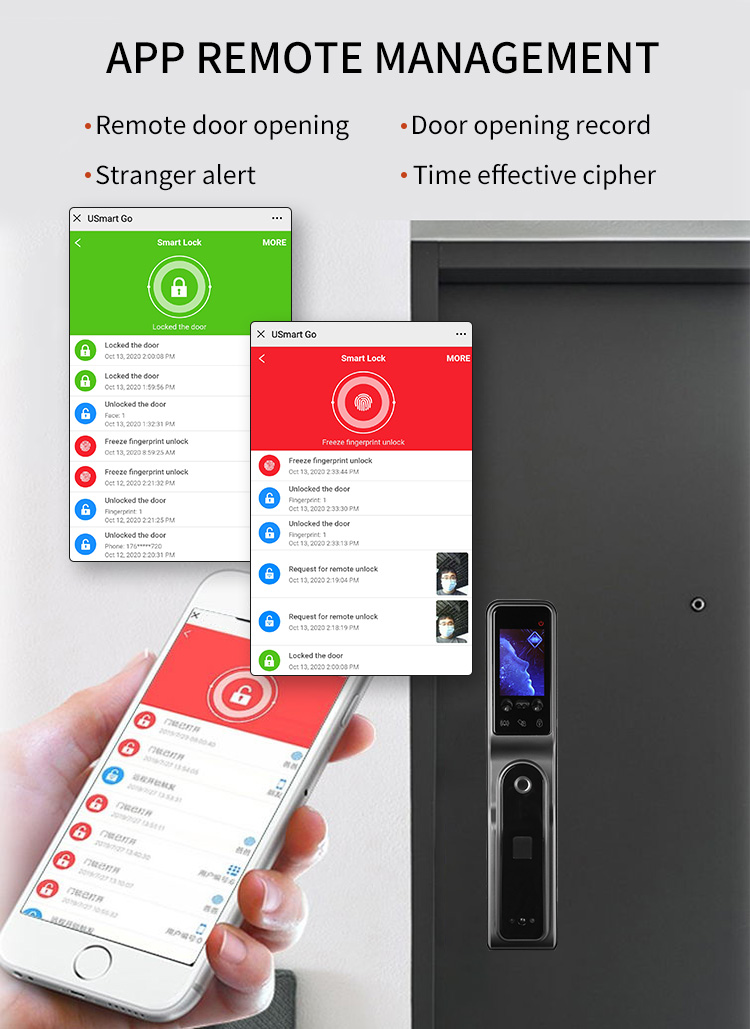Your browser version is too low, it may lead to sites not normally access!
You can use the site to function properly, use these browsers.
Smart Lock Installation - Six Steps to Install a Smart Lock Step 1: Remove Looking at the traditional door lock on the anti-theft door alone, you wouldn't think it's very big. But when you compare it with the lock body of the electronic door lock that you've taken off, you can really see what a "dominant lock body" is. The lock body is smaller and the corresponding locking points are also reduced by a few, but after confirmation with the on-site installer, it was found that having more locking points does not necessarily correlate with safety. Crucially, the locking point is firm and reliable, and the remaining locking points are achieved through linkage. This dispels safety concerns caused by the smaller lock body and fewer locking points.
Step 2: First installation and measurement After removing the old lock, the lock body of the electronic door lock needs to be "trial" installed in the anti-theft door. During the installation process, measurements need to be taken of the width, thickness and other data of the door panel and new lock body. According to the dimensions of the existing door lock and the position of the bolts, marks need to be made on the anti-theft door to make openings. In other words, the installation of the electronic door lock is a destructive installation.
Step 3: Make openings and drill holes After measuring the relevant data, the lock body needs to be removed, and an angle grinder or a disc sander, etc., need to be used to cut the steel body of the anti-theft door. The installation site is filled with flying sparks and the resulting noise doesn't need to be explained too much. It was originally thought to be a low-key modification, but it turned out to have alerted the neighbors.
Step 4: Install the lock body and calibrate The above steps are all preparatory work, and the actual installation process follows. The lock body needs to be fixed, but before it is completely fixed, a second calibration is needed. The position of the latch needs to match the original door frame, and most importantly, the door lock should not tilt. The author has seen many installation pictures on a certain website, and found that the door lock was not adjusted longitudinally, which does not affect its use but affects its appearance.
Step 5: Install front and rear panels The seemingly simple panel installation is actually the core of "smartization". A large bolt needs to be used to fix the lock body and the panel, and there is a connecting line between the front and rear panels, so that smart unlocking can be achieved. In addition, waterproof rubber pads need to be installed. From the figure below, it can be seen that the structure of a smart door lock is actually quite complex, and its weight is heavier than a traditional mechanical lock.
Step 6: Trial and set passwords After all the debugging is completed, the smart door lock needs to be configured. In order to ensure the safety of your home, the original password must be changed and the administrator's fingerprint information needs to be recorded. Any operation requires a password or fingerprint identification to determine its management authority. The entire process, from dismantling the door lock to installing and debugging, takes more than two hours. The time-consuming part is the measurement and opening stages. If the original lock hole is small, a lot of time will be spent on cutting. Calibration is a patient activity, the installer uses a vernier caliper to measure the data very finely, and any data error may cause irreparable damage.

Previous page: The advantages of smart fingerprint lock over traditional lock
Next page: Will ChatGPT4 bring a societal impact?